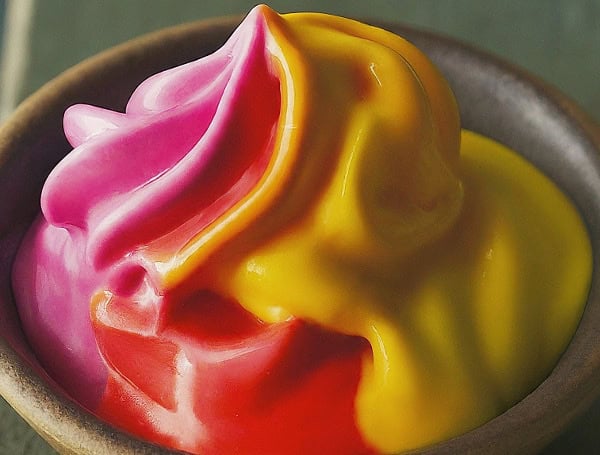In a move to safeguard the health of American families, Congresswoman Anna Paulina Luna (FL-13) has introduced two bills that aim to eliminate the use of harmful food dyes and high-fructose corn syrup in the United States.
As a champion for public well-being, Luna’s legislative initiatives, the “Do or Dye Act” and the “Stop Spoonfuls of Fake Sugar Act,” seek to address the alarming prevalence of these toxic ingredients in our food supply.
“It is time that we stop allowing unaccountable corporations and the complicit Food and Drug Administration to poison our families. Far too many Americans are suffering needlessly from type 2 diabetes, pre-diabetes, and mental health conditions as a result of artificial and harmful ingredients that are in nearly every refrigerator and pantry in our country,” said Luna. “Not only are we consuming spoonfuls of high-fructose corn syrup every day, but many of the foods and snacks we consume have dyes linked to an alarming number of health conditions.”
Read: Florida Rep. Greg Steube Pushes Effort To Name 4,383,000 Square Miles Of The Ocean After Trump
For years, consumers have been unknowingly consuming a myriad of synthetic food dyes, unaware of their potential health consequences. Dyes like Red No. 40, Yellow No. 5, and Yellow No. 6 have been linked to a range of concerning conditions, including hyperactivity, behavioral issues, and even cancer.
These artificial colorants, often used to enhance the visual appeal of processed foods, have no nutritional value and serve no essential purpose in the human diet.
By eliminating synthetic dyes, the “Do or Dye Act” paves the way for a return to natural, wholesome ingredients that can provide vibrant color and flavor without compromising our health. This shift towards a more transparent and responsible food industry aligns with the growing consumer demand for clean, minimally processed products.
Alongside the battle against food dyes, Luna introduced the “Stop Spoonfuls of Fake Sugar Act” to address the ubiquitous presence of high-fructose corn syrup in our food supply. This cheap, industrially produced sweetener has been implicated in the alarming rise of type 2 diabetes, obesity, and other metabolic disorders plaguing the American population.
Read: Disney Ends Legal Fight With State Of Florida, District
High-fructose corn syrup, despite its misleading name, is far from a natural or healthy alternative to sugar. In fact, its chemical composition and metabolic impact are distinctly different, contributing to a host of adverse health effects. By classifying foods containing this ingredient as “adulterated,” the “Stop Spoonfuls of Fake Sugar Act” aims to empower consumers with the knowledge to make informed choices.
These initiatives empower consumers with the knowledge necessary to make healthier choices. By classifying foods containing toxic dyes and high-fructose corn syrup as “adulterated,” she is sending a clear message that the well-being of the American people should take precedence over corporate profits.
The concerns of certain food dyes:
Red No. 40, Yellow No. 5, and Yellow No. 6 are the most common artificial food dyes used in the United States. They are responsible for the bright colors in many processed foods and beverages, including candies, snacks, cereals, and soft drinks.
While the FDA has approved these dyes for use, there have been concerns raised about their safety, particularly in children. Some studies have suggested a possible link between these dyes and hyperactivity, allergic reactions, and even cancer, although more research is needed to confirm these findings.
Here’s a summary of the potential concerns of Red No. 40, Yellow No. 5, and Yellow No. 6 food dyes.
- Hyperactivity and ADHD: Some studies suggest a possible link between these dyes and increased hyperactivity in susceptible children, potentially worsening ADHD symptoms. However, the evidence is not conclusive and more research is needed.
- Allergic Reactions: Some individuals may experience allergic reactions to these dyes, including hives, itching, swelling, or difficulty breathing.
- Cancer: Certain contaminants found in these dyes, such as benzidine, have been linked to cancer in animal studies. However, the levels of these contaminants are typically very low and the FDA maintains that the dyes are safe for consumption.
- Other Concerns: Some research suggests these dyes may have negative impacts on gut health and the immune system, but more studies are needed to fully understand these effects.
If you’re concerned about the potential effects of these dyes:
- Read food labels carefully: Look for products that don’t contain artificial colors.
- Choose whole, unprocessed foods: These foods are naturally colorful and don’t contain artificial dyes.
- Talk to your doctor: If you have concerns about your child’s behavior or health, discuss the potential effects of food dyes with their pediatrician.
Help support the Tampa Free Press by making any small donation by clicking here.
Android Users, Click To Download The Tampa Free Press App And Never Miss A Story. Follow Us On Facebook and Twitter. Sign up for our free newsletter.

